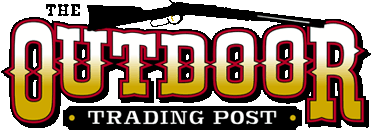I worked this lessen up for another forum -- but it applies here too. (This first part is 101 -- basics of compass navigating. I will soon post 102 -- advanced navigating in conjunction with maps, etc.).
If you are into prepping/surviving, the mechanical compass is a "must have" in your EDC bag or larger BOB. We are all used to having electronic gadgets that do our navigation today, whether it is a GPS, or Smart Phone compass, etc. But, in a SHTF event, the likelihood of losing power (via an EMP) and most forms of communications and transportation is high. If you are not trained in their use, you don't just pick up a compass and start navigating. Let's say you are fleeing your homestead for some safer location that is -- pick any distance (100 miles?) away. You've decided following road systems is too dangerous, so you set out across some wilderness. Having a good compass and knowing how to use it could make life a lot easier.
LEARNING THE BASICS OF A COMPASS, AND HOW TO TAKE AZIMUTHS.
I've decided to do this series on compasses and navigating in two, possibly three parts. The first part (101) will introduce the reader to the compass, its parts, and how to use it in the simplest ways -- but ways that could still keep you from getting lost. The next part (not here today) will go on to intermediate use, involving learning all about maps and charts and how to integrate their use with a compass.
All mechanical compasses work using Magnetic North. There are two basic kinds of compasses – the first kind is known as the Orienteering Compass, ones with needles that always point to magnetic north. The second kind of magnetic compass – called a Magnetic Card Compass -- uses a magnetized compass dial (or card) with Compass Rose, instead of the magnetized needle.
Orienteering Compass
There are also two forms of the Orienteering Compass -- the Base Compass, and the Mirrored Compass. These are very similar except that the Mirrored compass allows for increased accuracy when actually shooting azimuths as you sight it like a rifle. Both versions can be used in conjunction with maps.
example of an Orienteering (Mirrored) Compass
Once you have an azimuth (target bearing) sighted in, you rotate the bezel (which houses the compass card with cardinal points) to exactly line up the orienting arrow on the card with the magnetic needle. Your azimuth bearing is now the number (in degrees) that lines up with your Sight Line (sometimes on base compasses referred to as Direction Of Travel line, or Index line).
Study this diagram below before and learn the terminology of each part before moving on. Remember – with the Orienteering Compass, the needle stays fixed on Magnetic North and the card (with degree bearings, compass rose, and Orienting Arrow) moves (via a bezel) underneath it.
(click on the image to enlarge it)
The diagram below shows the Compass Rose. A compass rose is a circular figure on a compass, map, nautical chart or monument used to display the orientation of the cardinal directions—North, East, South and West—and their intermediate points. The one shown below expands it out to 16 points. Most compasses employ some form of the Compass Rose (4, 8, 16, or even 32 pts) on the card.
Magnetic Card Compass
Again, this type of compass uses a magnetized compass dial (or card) with Compass Rose, instead of the magnetized needle. Military forces of a few nations, notably the United States Army, continue to issue field compasses with this method. A magnetic card compass is usually equipped with an optical, lensatic, or prismatic sight, which allows the user to read the bearing or azimuth (0 to 360 degrees) off the compass card while simultaneously aligning the compass with the objective. One advantage of the magnetic card compass is that it takes one less step to obtain a bearing to the target, that being you do not have to move a bezel to align an orienting arrow with a needle. One disadvantage however (depending on your needs) is that the 0-360 bearing scale is resolute down to only 5 degree increments, instead of the 2 degree increments found on most Orienteering compasses.
This thing is built like a tank! I have one and love the Tritium markings for night time use.
Navigating Without Maps Or Charts
This is not the best situation, but if you find yourself without maps or charts, but you DO have a compass, you can travel from one location to another in the wild as long as you know a general bearing with which to head for. Both styles of compasses have an easy way to do this. With the Magnetic Card compass, there is a movable (via bezel) Index Line that you can use to overlay on top of the North line, so that when you have your bearing to your destination, you simply keep the two lines on top of each other and walk in the direction of your Sight Line.
Similarly, when using the Orienteering Compass, you keep the magnetic needle positioned directly over top of the Orienting arrow on the card while you walk in the direction of your Sight Line.
(continued in next post)







 Reply With Quote
Reply With Quote